In November of 2016, I left my 9-to-5 office job and started working for a remote-based marketing agency, which has since given me the freedom to work from anywhere in the world. I first set my sights on Buenos Aires, where I ended up staying for 7 weeks (it was great timing, since Trump had just taken office!).
Here are a few things that I learned about Argentinian (or, rather, Porteño culture)…
Pedestrians don’t have the right of way
I think this might be more of a South American thing, but cars literally will not stop for pedestrians (even at crosswalks where there’s no pedestrian signal). You can be in the middle of a crosswalk and cars will continue to barrel towards you as if there’s no tomorrow.
After nearly getting run over several times (quite literally), I learned my lesson: always cross with extreme caution and NEVER assume that a car will stop for you!
Argentinian Spanish is like Italian
Fun fact: Pretty much every Spanish-speaking person I’ve met seems to be obsessed with Argentine Spanish. It sounds like Italian-influenced Spanish, singsongey and melodic.
One Argentinian guy friend of mine lived in Barcelona for some time and told me that Spanish girls would go loco for his accent. My friend Carolina also gets the “OMG I LOVE your accent” all the time.
To the outside ear, Argentine Spanish can take some getting used to. My Spanish is still pretty basic at this point, but here are a few things I’ve found…
- The “y” sound becomes a “sh” sound. So instead of saying “yo,” it sounds like “sho”
- “LL” is pronounced as “Sh,” so “llevar” is pronounced like “shevar” and “calle” is pronounced “cashay”
- Argentinians don’t say “de nada” (you’re welcome), they say “no, por favor” (no, please)
- They don’t say “todo bien (all good),” they say “todo bien, por suerte” (all good, thankfully)
Argentine Spanish (or at least Porteño Spanish) borrows a ton of Italian words. For example, laburar (to work) is a slang word that’s taken from the Italian word “lavorare.” Fiaca (laziness) is taken from the Italian word “fiacca” (weariness)…
“Old” doesn’t exist
There’s one expression I recently learned which I love: viejos son los trapos, which means basically that things are old, not people.
You’ll probably never hear an old person being called viejo or “old” in Argentina. Waiters, for instance, even address middle-aged (and older) women as “chicas” (girls). Love that.
Many people wanna practice their English
Many times when I tried to speak Spanish, people would respond in English to me (to which, I would respond back in Spanish or simply say “español esta bien”).
I found that this very rarely happens in Colombia (where far fewer people speak English). So if you’re just passing through Buenos Aires, you could probably get by on unicamente ingles (only English). But the polite thing is to at least ask “Hablas ingles?” before assuming. You’d be surprised how many foreigners (ahem, Americans) don’t seem to do this.
The shoe trends are…interesting
At least when I was there, women in Argentina all seem to wear these hideous five-inch platform shoes (referred to as “tacos”), which for whatever reason, have become a trend in Buenos Aires. They look a little something like this…

And EVERYONE (at least all young people) wears them.
Grocery shopping isn’t ideal
The selection is much more limited for health-conscious eaters. Also, many of the fruits and vegetables look practically rotten, sometimes surrounded by flies. Not very appetizing.

Frankly, I found it difficult to find what appeared to be fresh fruits and vegetables. There are some smaller markets that sell healthy, organic foods, but still not even close to the same selection that you can find back stateside or in neighboring Brazil.
On that note…
It’s not easy to be vegan/veggie
This is, first and foremost, the land of meat. Porteños love their weekend asados, or barbeques (the abundance of rooftops and terraces bodes well for that).
A typical breakfast here consists of some medialunas (croissants) and coffee.
As for the alcoholic drink of choice? Fernet and coke. No party is complete without it.
All day long, you’ll see Argentinians drinking mate, which is like an herb tea served so hot that it’ll burn your tongue (at least until you get used to it). At parties and get-togethers, you’ll most likely see a thermos filled with hot water, which is poured into the tin cup every so often and then passed around for everyone to drink. Like so…

Not sure it’s the best idea for germ-spreading, butttt mate is always shared.
Bus and Uber are the ways to get around
There are three ways that I got around: Uber (or taxis); the bus or the metro. The metro is very limited, so in terms of public transportation, you’ll probably be relying mostly on the bus.
In order to take the bus or metro, you’ll need to get a card, and recharge it before boarding. If the card runs out while you’re on the bus, you have two passes which you can pay off another time and then you won’t be able to use it all. If that happens, you’ll have to ask a fellow passenger to pay for you (and give them the 7 pesos or whatever it is).
Uber is only available if you have a foreign bank card. Because of the taxi competition, people with Argentine bank cards are prohibited from using Uber.
If you take Uber, the driver will probably ask you to sit in the front seat and pretend that you’re a friend. ‘Cause if a taxi driver notices an Uber driver, he may pick a fight (yup, this actually happens).
BA feels like a European city
What’s interesting to me is that, despite its proximity, Argentina is culturally soooo different from neighboring countries, like Brazil. Argentinians themselves have told me that people are happier, more carefree and laid-back in Brazil.
From my experience, Argentinians are very nice and friendly once you start talking to them, but they generally won’t strike up a conversation with you on the bus or in the middle of the street. Of course part of this surely has to do with being in a big city–I’m sure it’s also a bit different in other parts of Argentina.
Another example: In Buenos Aires, like Paris, there’s a huge cafe culture. Whereas in Brazil, people tend to drink coffee standing up at juice bars.

The vibe is just completely different from Brazil–and it seems, the rest of South America. I really did feel like I was in a European city in South America.
People eat REALLY late
The proverbial nightlife and late-night dining of Buenos Aires is really something else.
I went out to dinner one night–and at 12:30AM, the restaurant was packed (so loud that I could barely hear the person I was with). And that was a Wednesday night!
Most restaurants close at 2AM, at least on weekends, because people generally don’t dine before 10-11PM. Most restaurants don’t open until 8PM, but that’s considered a super early hour to eat (probably equivalent to eating at 5PM in the U.S.).
When it comes to partying, people (at least young people) tend to pregame (or have prévia) until 2-3AM and then go out to clubs.
On one of my first weekends there, we got to the club (or boliche as they call them here) around 3AM and it was only around 4AM that the place started to get super packed.
But surprisingly, the streets are pretty quiet, even on weekend nights. People seem to party either at a friend’s place or a bar or club…not the streets.
Also, porteños save their real partying for the weekend (Thursday, Friday and Saturday). On Sundays-Wednesdays, everything is dead and streets are empty after about 1AM.
It’s pretty safe
Compared to Rio, where assaltos and robberies are commonplace in pretty much every single neighborhood, Buenos Aires feels very safe, especially neighborhoods like Palermo, Recoleta and Colegiales (where I lived). So safe that I would even walk home from my coworking space at night with headphones in my ear.
But like many other large cities, Buenos Aires can also be dangerous, depending on what part of the city you’re in. Venture much outside of the aforementioned areas to places, like to Microcentro, La Boca, and it can get pretty sketchy, fast…even in broad daylight.
It’s a city of contrasts
From the European-inspired architecture of Recoleta to the colorful, artistic buildings of Palermo to the dilapidated buildings in between, BA is a blend of styles. Each street corner is different from the next…




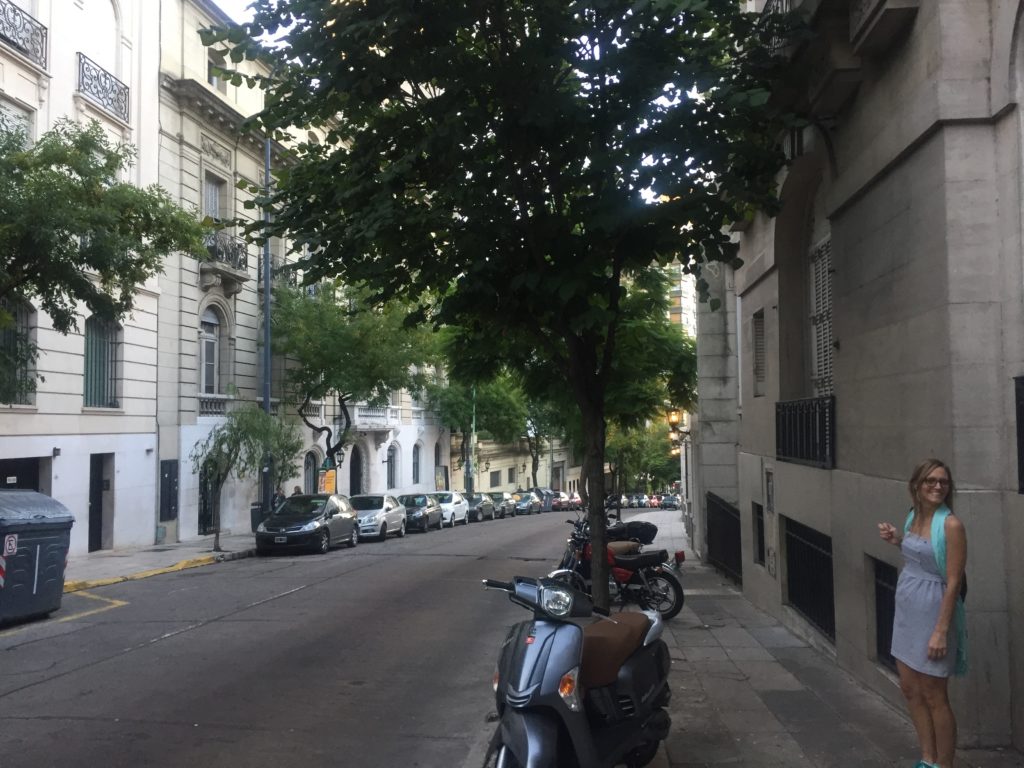


Graffiti and street art are EVERYWHERE in Buenos Aires, thanks to the fact that artists only need the permission of property owners to paint.
The plethora of abandoned buildings throughout the city means that there are plenty of blank canvases for artists to freely express themselves. On almost every street corner, there’s yet another incredible mural to admire. Much of the art is politically-charged or depicts the history of Argentina (which was ruled by a dictatorship for many years).
Here’s another little slideshow to show you what I mean:




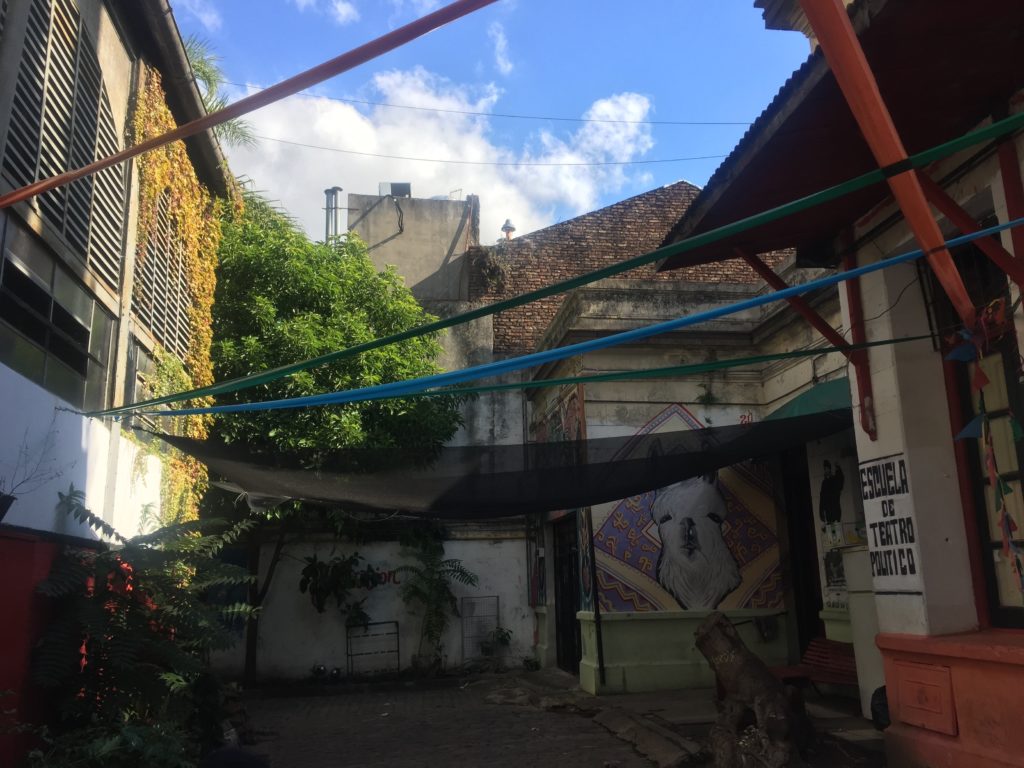

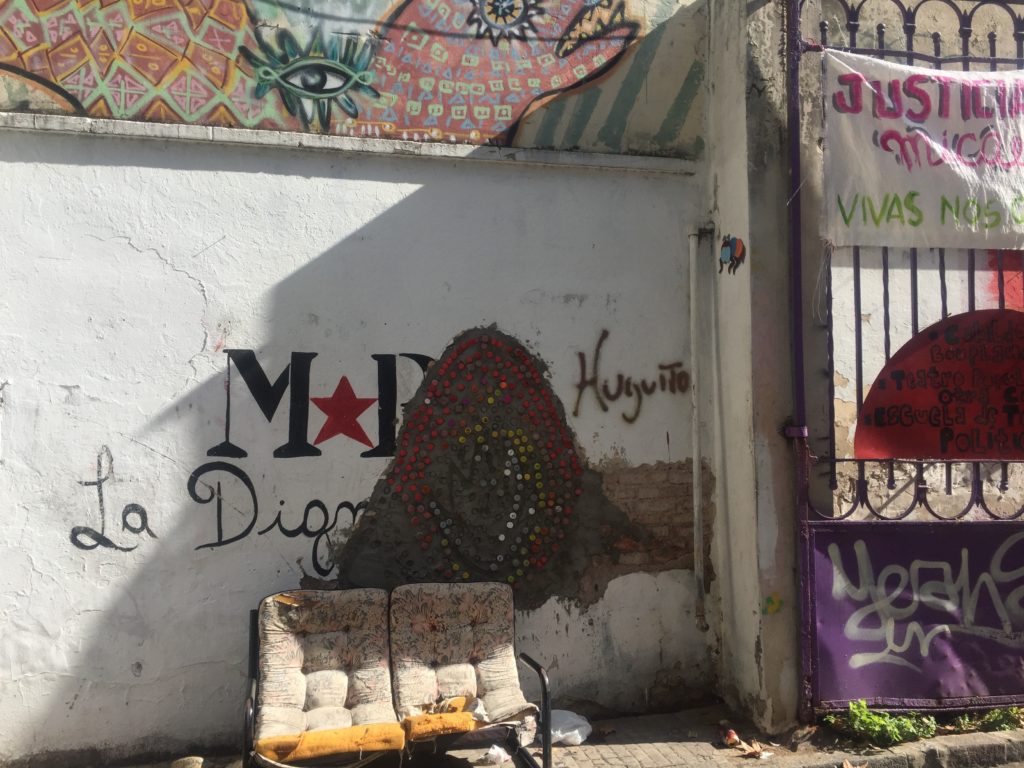
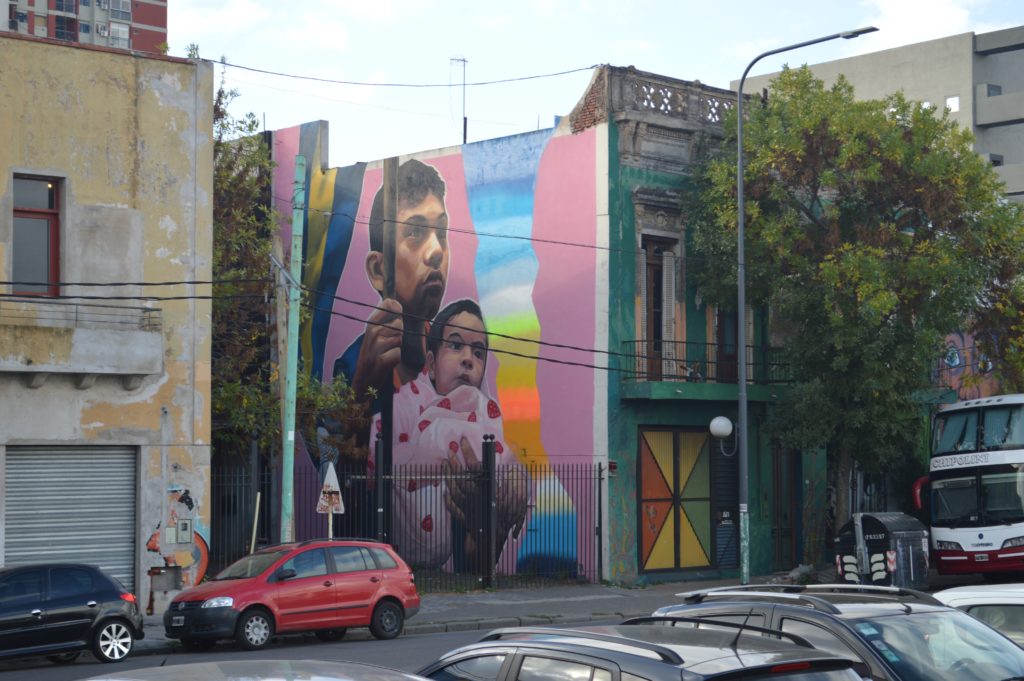



Buenos Aires may be a concrete jungle, but greenery and plants are everywhere.
From the tree-lined streets to the foliage adorning restaurant walls and window sills, there seems to be almost an obsession with plant-life in Buenos Aires.

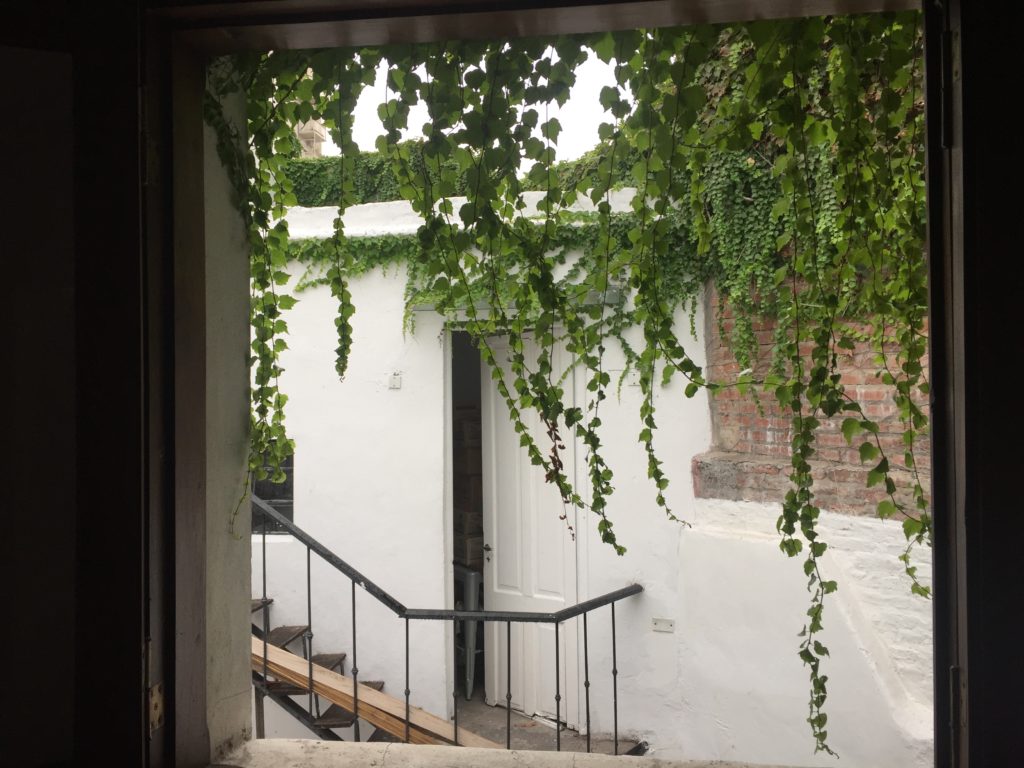
La gente (the people) are nice
While people aren’t quite as warm, relaxed and friendly as Brazilians (the bus drivers would never strike up a conversation with me, for instance, as would sometimes happen in Rio), almost everyone I encountered was warm and hospitable.
Once, I was riding the bus and my card had run out of money. So I asked a random teenage boy if he would use his card to cover me. He immediately agreed, but when I handed him cash for the ride, he refused to accept it. Granted, it’s not a lot of money (like 50 cents), but still really nice that he actually refused my money.
Another time, I was walking by myself (in broad daylight) to La Boca, a pretty sketchy neighborhood of Buenos Aires. I was trying to find the famous “El Caminito” street and ran into two police officers. They told me that it was dangerous for me to be walking by myself, because there was a soccer game going on. They then offered to drive me to my destination in their police car. As soon as I got in, I got a bit worried–what if they are corrupt and kidnap me?! But they dropped me off, safe and sound, to where I wanted to go (but not before one of the police officers asked for my Instagram! Only in South America does stuff like this happen…).
On that note, get a little alcohol in them or put them in a party setting, and Argentinian men can be pretty aggressive and persistent (they are also, for the most part, incredibly attractive). My friend, Carolina, and I went to a club one Thursday night. I kid you not, three or four separate instances, different guys literally grabbed my face and tried to plant one on me. And this, I’ve heard, is normal behavior. Granted, most of the people in the club were probably under the age of 25…but still.
Also, you’ll find that it’s totally normal for wait staff or people in the service industry to call female customers “linda” (beautiful), as in “Ciao linda” (bye beautiful). If that happened in the States, the employee would probably get sued for sexual harassment!
Sólo effectivo, porfa
Get used to hearing “sólo effectivo” (only cash) in Buenos Aires. While nicer restaurants generally accept credit cards, they don’t accept all credit cards (sometimes only debit cards). And most places only accept effectivo or cash.
It’s pretty much impossible to get by on just credit cards in Argentina, and I found myself having to make frequent trips to the ATM.
The Verdict
Crazy nightlife and late-night dining. Delicious Malbecs. Fernet and mate. Tango. Neoclassical architecture and edgy street art.
My verdict? Spend some time getting to know Buenos Aires. I think it’ll be worth your while.

